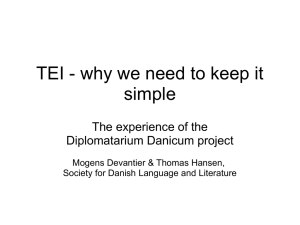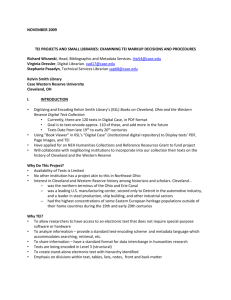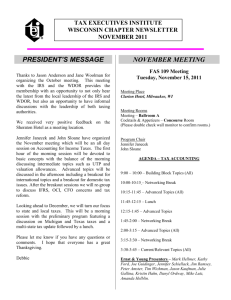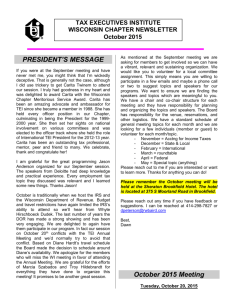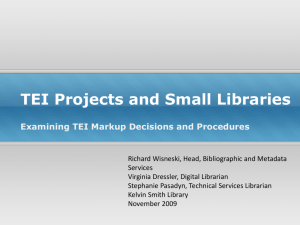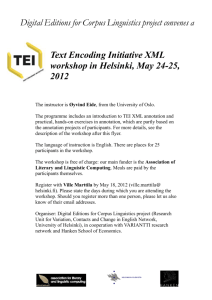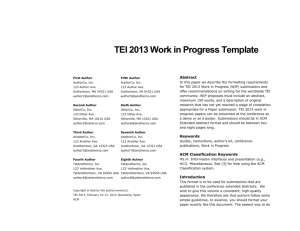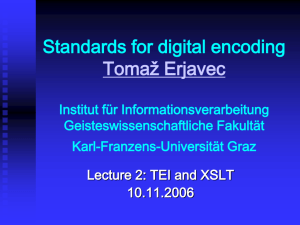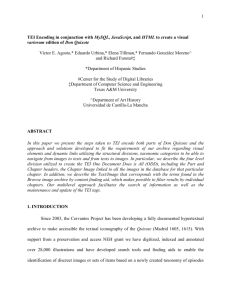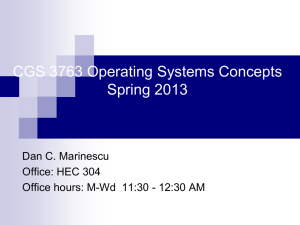TEI HEADER - JIS110A 2009-2012
advertisement
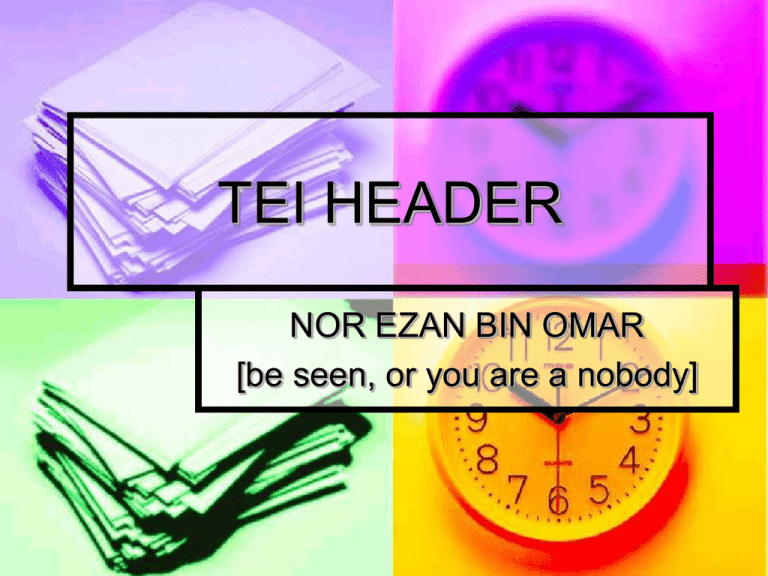
TEI HEADER NOR EZAN BIN OMAR [be seen, or you are a nobody] TEI HEADER Text Encoding Initiative Header was founded in 1987 Guidelines for encoding machine-readable texts of interest in the humanities and social sciences An international interdisciplinary standard to assist libraries, museum, publisher, and scholar in representing literary and linguistic texts in digital form to facilitate research and teaching Designed to maximize expressivity and minimize obsolescence TEI HEADER : OBJECTIVES Creating a common interchange format Provide guidance for new text encoding ‘how’ encoding should be preserved for interchange purposes ‘what’ should in fact be encoded TEI HEADER : GOALS Guidelines are intended to provide a standard format for data interchange in humanities research Guidelines are also intended to suggest principles for the encoding of text in the same format Guidelines should Define a recommended syntax for the format Define a met language for the description of text-encoding schemes Describe the new format and representative existing schemes both in the met language and in prose The guidelines should propose sets of coding conventions suited for various applications TEI HEADER : GOALS Guidelines should include a minimal set of conventions for encoding new texts in the format Guidelines are to be drafted by committees on text documentation, text representation, text interpretation and analysis, met language definition and description of existing and proposed schemes Compatibility with existing standards will be maintained as far as possible Encourage funding agencies to support development of tools to facilitate this interchange TEI HEADER : FUNCTION Guidance for individual or local practice in text creation and data capture Support of data interchange Support of applicationinterdependent local processing Hardly possible to address any one without addressing the others as these functions are so thoroughly interwoven in practice TEI HEADER : BENEFITS Can be used in different operational setting Exist as part of conformant text Can be stored separately from the text to which they refer Independent headers could be used to describe networked resources which are not necessarily themselves TEI encoded [metadata] Carry detailed encoding, profile and revision information, but would point to a MARC record that would contain the bibliographic description. Support a number of field categories Provided bibliographic history and information on electronic text and its creation Standardized TEI header formats will allow other institutions to take advantages of some concepts and with greater opportunities for metadata exchange Facilitates greater interoperability with other metadata and markup schemata TEI HEADER : IMPACT Internationally recognized as a critically important tool for both longterm preservation of electronic data Have been endorsed by many organizations around the world Library of Congress has produced guidelines for best practice in applying the TEI metadata recommendations for interpretability with other standards THANK YOU KNOWLEDGE IS POWER
